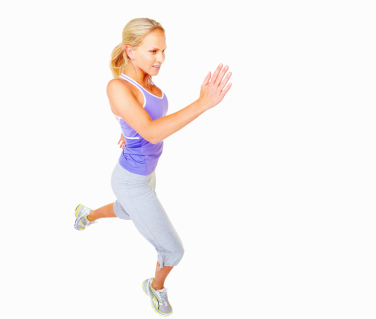How to Increase Speed and Build Endurance?
by Ruchir
(India.)
Hi Dom,
I am 97 kgs and 40 years old and started running a year ago. I finished my first 10k in 92 minutes.
Since then, I have kept running three times a week for about 7 kms per day. I did another race, pushed hard and could achieve 10k in 82 minutes.
Can you give me tips on how to increase speed and build endurance?
Answer by Dom:
Hi there,
Thanks for your question about increasing speed and building endurance.
Well done on giving running a go. Congratulations on completing your first few races and maintaining a consistent running training program of running three times per week. My advice would be:
1. Increase your mileage and further develop your base
2. Add some strides to help develop some leg speed
3. After your base is developed, add some faster workouts
See below for further information.
Increase Your Mileage and Further Develop Your Base
Running seven kilometres, three times per week is a great start and doing so consistently is no mean feat. To increase your speed and build your endurance, you will want to increase your mileage. Add another day of running and/or make your runs longer. Elite 10k runners would do weekly long runs of 15-20 miles (25-32 kilometres) and many runs during the week that exceed the 10k distance.

Also check out:
Increasing Mileage Safely
Building Your Base
Add some strides to help develop some leg speed
Strides are short, faster runs at the end of a run. You do them by starting off slowly, staying nice and relaxed and building up your speed gradually until you hit close to your maximum speed for a couple of seconds and then you taper off, down to a relaxed jog or walk. Take a decent break in between, e.g. 90 seconds of gentle jogging, then do another stride.
I usually do them in the last 1-2k of an easy run. The goal with strides is to improve running form and efficiency by making you focus on quick and efficient foot turnover. Strides can also help to improve running speed by increasing leg turnover and teaching your legs to move faster. Strides are good way to finish a workout as finishing on a faster, stronger note should help leave you energised.
Also check out:
Running Strides
After your base is developed, add some faster workouts
Only after you have focused on increasing your mileage and further development of your easy running base, only then, it is time to add some faster runs. A good way to start with speedwork is fartleks. A fartlek is an unstructured speed workout. You basically do an easy run, but in the run you pick a number of times in which you pick up the speed for a certain amount of time.
Sounds a bit vague? You could add some structure by picking landmarks to run to. Run easy and suppose you are in a street with lampposts, start running faster at one lamppost and stop the faster running at the next one. Or pick up the pace till the next car. Or keep it more open and pick up the pace until you have passed five pedestrians.
My fartlek page describes the concept further and also provides a number of more structured fartlek workout ideas.
Additionally, I'd also recommend checking out my Running Workouts page, which describes a range of different workouts you could experiment with.
Hope these running tips help you improve your speed and endurance and help you to new successes in your endeavours to run a faster 10k!
Kind regards,
Dom



